Need to know your Bone line from your tumblehome? Car Design News presents an exhaustive and detailed glossary of car design terms
Introduction to automotive design terminology by Nick Hull and David Browne
Drawing is the language of designers and is the time-honoured way in which a designer will communicate an idea. However, the designers are often required to describe or explain their designs - and the work of others – in words, and for this, they need a vocabulary. Automotive designers possess one whose origins stretch back to another era and to different disciplines, and which, as the process continually evolves, is still growing.
There is often a suspicion that this vocabulary was deliberately evolved to exclude ‘outsiders’. If that were so, it would be understandable and entirely consistent with the almost guild-like, and necessarily secret nature of creating and developing high-investment future products in a highly competitive environment.
Due to the global nature of car design studios and staff, US American terms dominate automotive design studio vocabulary, eg windshield, fender. UK English terms for these items are not generally used, even within UK studios, since the engineering teams for decades have long adopted international parlance, due to the influence of key Tier 1 suppliers from the 1950s onwards.
This glossary was originally compiled by David Browne of Coventry University but is updated here and expanded to include new terms. Of course, each company and design studio will have their own expressions and variations of vocabulary but hopefully this glossary can provide a decent grounding for those wishing to describe the products of designers’ imagination or to acquire a correct working knowledge and understanding of it.
A
- A/B/C/D-pillar: the notation of the car’s pillars from front to rear. A ‘6-light’ design has an extra window behind the rear door and thus a final D-pillar at the rear of the car. Likewise, the rear pillar on 4-door SUVs and wagons is a D-pillar. Whereas the A-pillar and C- or D-pillar are chiefly concerned with style and flow of the greenhouse, the B-pillar is primarily functional, and thus often blacked-out to minimize its visual intrusion. Also called A-post etc (US).
- Alloy Rims: The generic name for any non pressed-steel, metal wheel, and the single most important piece of automotive jewellery. They are cast or forged in aluminium alloy, with a protective, usually silver-painted, finish. The importance of wheels to a car’s appearance and stance is not lost on the manufacturers, who always list a range of larger-diameter optional-extra alloys, and also fuels an enormous after-market industry. Landmark designs include Bugatti’s beautiful 1924 ‘Type 35’ 8-spoke design, the 1960s Porsche 5-spoke forged Fuchs and aftermarket ‘Minilite’ wheels.
- Armature: a frame or structure for a mock-up model or prototype. It is also used to mean the underlying substrate or structure for a component eg the instrument panel.
B
- BIW: ‘Body in White’. Originally, most steel bodies were painted in white primer at the initial paint stage. Nowadays it refers to the bodyshell of the car either in a raw unpainted state or in initial primer coat.
- Belt Line: the main dividing line between the lower body and the greenhouse. Typically the base of the side windows (UK colloquial term = Waist Line).
- Body Section: A vertical slice through a car body side which is then viewed at 90 deg to help understand or appreciate the form. Tape lines applied to the surface describe it nicely, the trailing edge of an open front door describes it perfectly, but only at that point – body sections are not constant.
- Bone Line: This is a hard and prominent, positive only, linear ‘peak’ in a car’s bodyside. With reference to the often-used ‘taut skin over muscle’ metaphor this implies sheet metal stretched over something more structural, like an underlying ‘bone’. See also feature line, swage line.
- Bumper Stroke: the distance of the bumper face from the body. To meet front and rear impact regulations the bumper must be able to deform and thus an offset is needed to accommodate this impact without damage to body panels.
C
- Cantrail: the structural section above the doors, the main box section at the edge of the roof to which the roof panel is welded
- Centre Stack: the vertical section of the centre console linking to the IP, typically containing the HVAC and entertainment controls.
- Chaplets: the small indications on instrument faces to indicate graduations of scale eg of speed, temperature, fuel, EV charge etc.
- Chin: The lowest section of the front bumper, closest to the ground.
- Class-A Surface: the highest quality of visible surface, exterior or interior. In addition, a Class-A surface adheres to all engineering constraints and regulations to enable tooling for manufacture. The perfecting of those surfaces in digital modelling is known as Class-A surfacing. Class-B surfaces may be those that are less visible eg closing panels, trunk areas etc
- Cowl, Cowl Line: the upper area of the firewall, directly below the windshield. This assembly of panels contains the wipers, washer nozzles, air intakes for the heater, hood hinges etc – a complex functional area that requires careful design to integrate these features together into a coherent whole. (UK colloquial term = scuttle).
- CMF: ‘Colour, Materials, Finish’. This term has replaced the older term for these areas of studio activity, formerly known as ‘Colour & Trim’.
- Crease Line: a line formed by a simple intersection of two surfaces, typically on a bodyside or hood panel. A stronger section change such as an undercut shoulder line using closely grouped parallel lines is a feature line. See also swage line, bone line.
- Crown: Crown in a panel is compound curvature – usually convex: in one plane it would simply be ‘curvature’. To the engineer, crown provides inherent stiffness; to the designer it enables the control of highlights and lightlines.
D
- Dashboard – see IP.
- Dash-to-Axle: in American car companies the firewall is known by engineers as the ‘dash’, a key hard point. This references the Edwardian use of the term ‘dashboard’ meaning the toeboard and bulkhead, not the IP. The distance from the ‘dash’ to the front axle is thus termed dash-to-axle, a crucial dimension for any common vehicle platform. More recently, designers have adopted the term to mean the distance from the base of the A-pillar (or the front door shutline) to the front wheel, with a larger distance implying a more classical or premium proportion to the side view.
- Doors: Conventional doors have to obey certain rules: hinge points must be in a vertical plane to avoid having to open a door ‘uphill’ against its own weight, or being dragged ‘downhill’ by it. Other door types include:
- o Gull Wing Doors: 1955 Mercedes 300SL, DeLorean
- o Barn (or ‘Suicide’ or ‘Coach’) Doors: LEVC taxi, Rolls Royce Phantom
- o Scissor Doors: Lamborghini
- Door Card: old term for door trim panels.
- Door Trim Panel: The moulded inner lining of the door, containing the armrest and door inner release handle etc. Until the 1970s these were often flat and constructed of cardboard or hardboard – thus known as door cards.
- DI Lamp: Direction Indicator lamp: the orange turn signal lamp, front and rear.
- Di-Noc: a highly stretchy plastic film used to cover clay models to represent a painted finish for viewings. The proprietary film was originally made by 3M and is typically painted in silver, although other colours can be used eg dark grey for window areas and headlamps. Di-Noc is also used as a quick tool to check highlights as the clay model is being developed.
- DLO: ‘Day Light Opening’, the graphic shape of the side windows, including the pillars. The DLO is the strongest and most important graphic element of a car’s design. Often outlined with a chrome strip to emphasize the overall shape.
- DRG: ‘Down Road Graphic’. The design features and characteristics of the ‘face’ of a car which enable the brand to be immediately identified from some distance away. Coined by design teams in 1990s when grilles started to make a comeback and stronger frontal identities were sought.
E
- Escutcheon: the surrounding frame to a handle or knob eg a door armrest or interior door release handle. The function is to minimize the visible gaps and hide the underlying screw fixings.
F
- Feature Line: a strong section change involving two or more surface intersections such as an undercut shoulder line. Their principal purpose is to variously create definition, add emphasis, visual interest, design organization, and to direct the viewer’s eye. See also swage line, bone line.
- Fender: the front or rear panel surrounding the wheelarch (UK colloquial term = Wing).
- Flag: the triangular area in the leading edge of the front door where the door mirror is typically mounted. Smaller versions may be found at the trailing edge of rear doors, to allow the door glass to drop and avoid the door lock mechanism. Also known as cheater panel.
- Firewall: the main structural barrier between the engine bay and the interior of the car. (UK colloquial term = bulkhead).
- Flip / Flop: a car paint term referring to the difference in the basic tone between the upper bodyside as opposed to the lower bodyside, which lies in shadow. A paint colour may have a lot of ‘flip’ – the tone changes rapidly when tilted towards the light, or a lot of ‘flop’ if it rapidly darkens when tilted towards the ground. The difference is known as the ‘travel’ of a paint colour.
- Foamcore: a proprietary type of mounting board, typically used in graphic design studios. Available in various thicknesses, it can be easily cut with a sharp knife or scalpel.
- French Curve: guides or templates made from plastic, wood or metal used to create smooth curves between two or more pre-determined fixed points used in traditional 2D drawing and 3D manual modelling. Guides used to describe curves of varying radii – ie non-constant curves which produce lines which ‘accelerate’ or ‘speed up’ by unwinding - are called French Curves and Ships Curves.
G
- · Graphics: the applied shapes laid on the surfaces of the body, the third level of design after the volumes and surfaces have been considered. Graphics items include grilles, lamps, windows, emblems etc
- · Greenhouse: the glazed upper body volume of the car, the entire cabin above the belt line from the base of the windscreen to the base of the rear window.
- · Ground Clearance: the distance underneath the car. An offroad 4x4 would understandably have more ground clearance than a road-based sports car.
- · GRP: Glass Reinforced Plastic, also called Fiberglass (US).
H
- · H-point: short for Hip Point, this is the most important vehicle interior reference datum, from which many other regulations, such as vision angles and reach zones, are derived. Packaging teams use standard SAE manikins of varying sizes, particularly the 95th percentile male manikin. The H-point location of this manikin is also known as the ‘Seating Reference Point – SgRP, or R-point in Europe.
- Hard Points: fixed engineering points on the car, usually with structural or legislative constraints eg the front bumper beam and crush structure.
- Header: the structural section above the windscreen or rear screen, the main box section at the ends of the roof to which the roof panel is welded.
- HMSL: ‘High Mount Stop Lamp’ – centrally mounted stop lamp, usually at the top of the rear screen or trailing edge of the trunk lid.
- Haunch: Where the shoulder surface swells upwards and outwards over the rear wheel is termed a haunch, deriving from the analogy to a muscular animal such as a racehorse or tiger. Sports cars and certain brands such as Jaguar were traditionally associated with this design motif, more recently the Ford Mustang and Mustang Mach-e have employed it.
- Highlights: A highlight is a visible concentration of light which ‘flares’ off a lightline at a point which is dependent on the position of, and will move with, the observer. As with lightlines, particularly sharp creases will create crisp, tight highlights and gentler ones will generate correspondingly bigger but softer highlights. See Lightlines.
- HVAC: ‘Heating, Ventilation, Air Conditioning’. Originally a Ford term, it has passed into general use as the design term for this area of cabin temperature control. The HVAC system includes the heater box, AC condenser, controls, air ducts and vents.
I
- IP: shorthand term for instrument panel (UK colloquial term = dashboard). The use of the term ‘instrument panel’ has changed over time. Originally used to describe the panel containing only the instruments, it has evolved to mean the entire dashboard assembly running across the full width of the car.
L
- Lightlines: Lightlines and highlights exist on the surfaces of all shiny objects, and are key to describing and understanding form. Lightlines are effectively ‘paths’ of reflected light which ‘run’ along a surface and make it possible to understand its sculptural form without reference to its outline shape (but the additional information provided by outlines does help build the complete picture).
A car is not, of course, a purely static object, and as it (or the observer) moves, lightlines and highlights will travel along and around its surfaces. Organising this flow around a complex 3D form so that it works from any and all angles and views is hugely challenging and requires great sculptural feel and experience.
M
- Mask: the front or rear ‘face’ of the car. The front mask usually has two elements to it: the upper mask comprising the main headlamps and grille, the lower mask containing the functional lower grille apertures for radiator, brake cooling, air conditioning condenser and fog or driving lamps.
- Mock-up: A non-functional representation of the exterior or interior of the car. The initial development model for any new car design. A mock-up can be constructed from many possible materials including sheet metal, solid wood, clay, foam, GRP etc. depending on the eventual function and method of build available to the designer.
- Mohican Line: Originally coined by Honda, it refers to the black or body-coloured capping strips which cover the weld joint line between the roof panel and the body sides above the cantrail. It may also conceal the location points for roof bars. Otherwise known as ‘roof joint finisher’ or ‘roof channel capping’.
- Monocoque: A construction method, first widely used by the aircraft industry, in which the exterior pressed skin panels support some or all of the loads on the structure without the need for a separate chassis frame. Most cars bodies are manufactured this way. Sometimes referred to as ‘unitary body’, the idea was pioneered by Lancia with the 1923 Lambda but the first truly mass-produced chassis-less European monocoque body was the 1934 American Budd-inspired Citroen ‘Traction Avant’. Also known as Unibody (US).
O
- One-Box: A term for a vehicle that has one main volume (no hood or trunk), typically a minivan. A vehicle that is comprised of two main volumes is a two-box, ie a hatchback, SUV or wagon, and a three-box is a traditional sedan with hood, greenhouse and trunk. Also called Monospace or Monovolume.
- Obscuration Band: The black borders around the edges of any fixed glass, such as a windshield, backlight or six-light. The black ceramic coating is added to the rear glass surface to obscure the underlying bonding, which would be unsightly. There is usually a graduated dot matrix edge to avoid a sharp cut-off and allow for any interior trim tolerance.
P
- Plan Shape: Plan view is simply the elevational view of a car as seen from directly above. Plan shape, refers to the amount of curvature in body sides, and particularly front and rear ends, as seen from above (ie in plan view). Cars have predominantly constant curvature in plan, but these days this curvature will accelerate noticeably towards the front and rear ends (where it is referred to as ‘tuck in’) leading into much more generously radiused corners – or in some cases, effectively, no corners at all. Clever use of plan shape – visually pulling the corners back - provides the designer with the best opportunity to disguise front and rear overhangs.
- Package / Package Drawing: the overall layout of the car, including the occupants, engine and wheelbase etc. A package drawing is one that shows the complete layout of the vehicle, in orthographic views (side, plan, end)
- Proportions / Volumes: the proportions of a vehicle are predominantly concerned with the side view of it, or when viewing a 2D drawing or sketch. The relationship of the greenhouse to the wheels, the height of the vehicle, the overhangs etc are all key points to be considered. Once it moves into 3D, designers tend to use the term ‘volumes’ and stance to evaluate these same elements. A volume model is the initial 3D model that may be milled out to appraise these points before proceeding with more refinement work.
R
- Ramp Angles: The Approach Angle is measured by drawing a tangent from the leading edge of a front tyre upwards to the lowest point on the front overhang. The Departure Angle, by a line similarly drawn from the trailing edge of a rear tyre to the lower rear overhang. The Breakover Angle is that created by drawing tangents from the trailing edge of the front tyre, and the leading edge of a rear tyre to meet at the centre point under the sill / rocker.
- Rear Deck: the main horizontal surface of the trunk lid (or tailgate).
- Rear Quarter Panel: an alternative name for rear fender, since the pressed panel will typically extend far beyond the limits of the rear wheelarch into the roof and rear door shut.
- Rear Tonneau: the panel between the trunk lid and the base of the rear screen (or folding hood on a convertible).
- Rendering: a fully resolved, coloured version of a design sketch.
S
- Soap Dish: the depression in the rear face of the trunk lid where the licence plate is mounted.
- Six-Light: a six-light cabin has three windows on each side of the car eg Audi A4, A6. A car with just two windows is termed a four-light style eg VW Golf.
- Spat: a removable wheel cover panel, popular in 1950s eg on Jaguar XK120 rear wheels.
- Spaceframe: a construction method in which a complex but lightweight and rigid, internal tubular structure or skeleton is covered by a non load-bearing skin. Exemplified by the 1960 Maserati T.60 ‘Birdcage’.
- Spline: another term deriving from naval architecture. A spline is a long strip of flexible wood, sprung steel or plastic which is used as a guide to draw or model smooth curves, particularly on a clay model. Held against its natural spring either at the ends or at a number of fixed points with weights, it will take the line which minimizes the energy required to bend it and adopt the smoothest possible ‘natural’ curve in its attempt to straighten itself out.
- Stance: the way in which a vehicle sits on its wheels, a combination of proportions, wheel-to-body relationship, and wheel size.
- Styling: The term ‘styling’ tends to be used in a dismissive, derogatory sense to imply superficiality in design and has died out as a term for visual design of vehicles. However, this denies the notion that it may, in itself, have some value, not merely a skin-deep approach to design. At its ‘superficial best’, styling may dominate function, but should not compromise it. It is an exercise in form and semantics – the emotional trigger that attracts us in the first place, and like anything else it can be done supremely well or truly badly. ‘Styling’ was also previously used as an abbreviation of ‘Styling Studio’, it was thus useful in differentiating a Design Studio from those other areas where design activities happened – chassis design, engine design etc.
- Styling Buck: a mock-up model of an exterior or interior, typically using clay. Interior bucks may be part-models, eg just the front cabin and front seats.
- Sketch: Sketches are an important visual expression of a designer’s creative thought process, but not generally the end product. There is debate about whether sketching is, itself, a thinking process, whether the thinking and sketching are ‘simultaneous’ or whether the thinking is done ‘normally’ and transmitted - via the hand - to tablet or paper, for appraisal by the eye.
- Concept Sketch: Initial sketches (or ‘thumbnail’ sketches) are used as an aid to evolving and visualizing an idea, and initially will be rapid, exploratory and ‘evocative’ rather than definitive – trying to catch the ‘spirit’ or ‘mood’ of the idea - firming up in terms of line quality, detail, and form definition as an idea is developed in a development sketch.
- Sketch Model: a ‘quick and dirty’ (and fast) means of translating a 2D sketch into 3D to make sure that the essence of the graphically successful sketch is not lost – or indeed, to confirm that the translation is actually possible. As with a sketch, the sketch model is a means to an end, not an end in itself. For a 3D digital model (eg using Alias Sub-D software), the simple objective is to map-in the broad surfaces and, importantly, check the conjunctions of these surfaces before proceeding with a more detailed model.
- Shut Line: the gap between two panels, especially opening panels such as doors or trunk lids. Also called Shut Gap (US).
- Shoulder/ Shoulder Line: the intersection of the shoulder surface that juts out beneath the side windows and the vertical door surface. Not to be confused with the Belt Line, which (confusingly!) lies above the shoulder. A shoulder is not strictly necessary: cars in the 1970s notably tended not to have any shoulder surface and thin doors in a bid to maximise interior space but the introduction of door side intrusion bars required more thickness again in doors.
- Surfacing: the refining and perfecting of body surfaces. Body surface data is refined using a number of digital softwares so that final body tooling can be released for manufacture.
- Surface Language: the form language of the car, once the basic volumes and proportions have been established. Surface language is one of the key elements of exterior design and will be the subject of constant evolution. For example, surface language changed in the early 1980s from highly geometric surfaces to softer, more organic surfaces typified by the Ford Taurus or Sierra.
- Swage Line: an extremely strong feature line, usually inscribed into the body surface eg 1995 Fiat Coupé or 1998 Jaguar S-type.
T
- Tape Drawing: a drawing, usually 1:1, using 3M black crepe tape on a transparent non-stretch film. The slight flexibility of the tapes allows a high degree of control over the gentle curves generated by the designer and the high contrast of the black tape on a light surface allows the drawing to be ‘read’ from across a studio. Tape drawings originally provided a fast way to represent a full-size image of the design prior to going into 3D, plus it provided accurate curve data to the modellers.
- Trunk: luggage compartment (UK colloquial term = boot).
- Tumblehome: the slope of the side windows from vertical. Originally derived from naval architecture, where the sides of a galleon ship slope inwards above the water line.
- Tuck In: the acceleration in plan shape towards the front or rear of the vehicle, before it meets the actual corner of the body. Rear tuck in has some aerodynamic advantages, while front tuck in and plan shape assists in greatly improving manoeuvrability in tight parking spaces.
- Tuck Under: whereas there is tumblehome in the greenhouse, the equivalent in the lower bodyside is tuck under, where the bodyside curvature accelerates and wraps into the sill. The visual objectives are to allow more prominence to the wheels and wheelarches and to make the body look slimmer by introducing more shadow in the lower bodyside. The downsides are poorer airflow along the sides and turbulence around the wheels, hence this area will always be a balance between aesthetics and the aero teams!
U
- Underlay: a preparatory drawing, used to speed up the creative process. The slight transparency of vellum and the thin white paper in layout pads allows the use of underlays to aid the traditional paper sketch and sketch development process. Drawings or photos placed underneath (or on another layer in Photoshop) will show through and can be sketched over, as can previous drawings, making adjustment or improvement straightforward.
- UI: User Interface design focuses on how users will interact with the vehicle (or product) and ensure that the interface controls and displays have elements that are easy to understand and to operate. UI brings together concepts from interaction design, visual design and information architecture.
- UX: User Experience design covers the more holistic approach to how users interact with the vehicle or product and provide meaningful experiences for them. It involves many different areas of product development including branding, usability, function, and design.































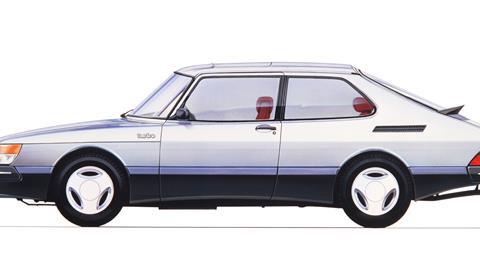
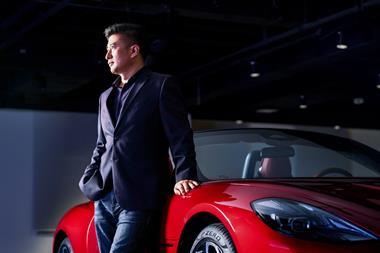
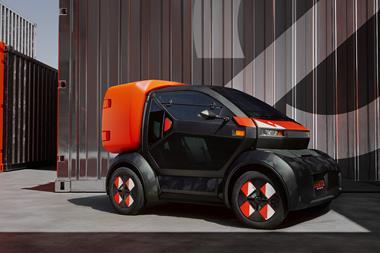
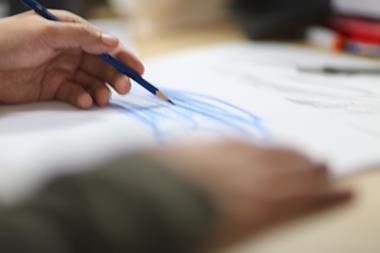
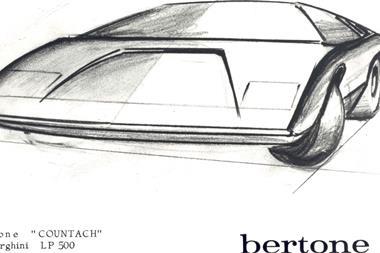
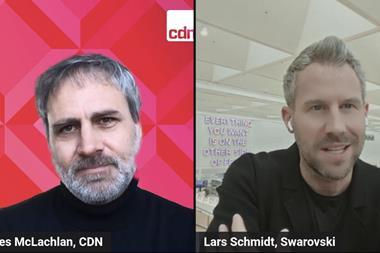
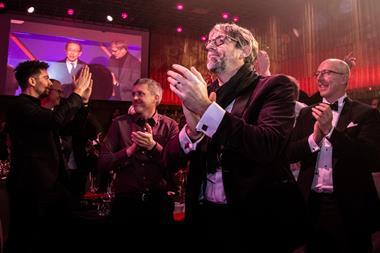



No comments yet